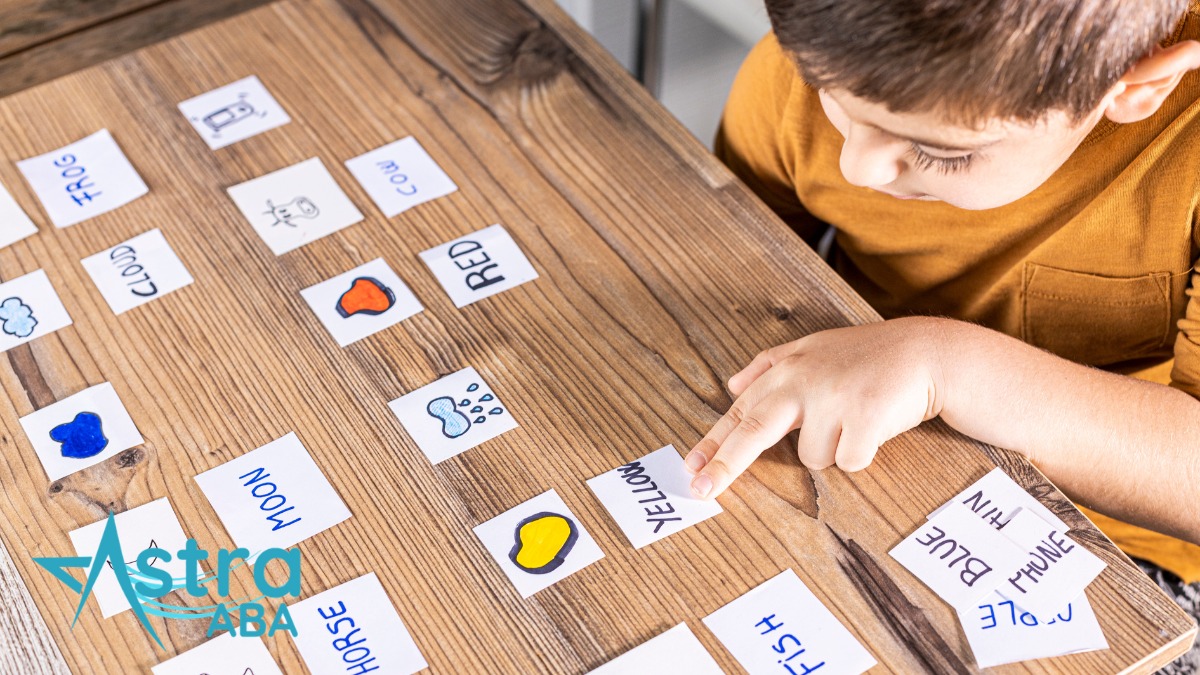How to Create a Visual Schedule for Autistic Children
Learn how to create a daily routine and visual schedule for your child with autism. These schedules help manage daily activities and improve routines.
June 24, 2025
Key Points:
- A well-designed home schedule for autism improves understanding, reduces anxiety, and builds independence for children with autism.
- Visual schedules should be clear, consistent, and adapted to the child’s cognitive and sensory needs for maximum effectiveness.
- Using pictures, symbols, and clear routines helps children anticipate daily activities and manage transitions smoothly.
Many parents of children with autism face the challenge of helping their child navigate daily routines. Creating a home schedule for autism using visual supports can dramatically improve your child’s ability to understand expectations, reduce stress around transitions, and increase independence.
Visual aids help clarify complex sequences and improve communication, which is often a core difficulty for children on the spectrum. In this article, we’ll dive deep into how to create an effective visual schedule tailored to your child’s unique needs.
What is a Home Schedule for Autism and Why Is It Beneficial?
A home schedule for autism is a structured daily plan that visually outlines the day’s activities and routines, often using pictures, symbols, or written charts. It provides a clear framework that helps children with autism anticipate what will happen next, reducing uncertainty and anxiety that can arise from unpredictable changes.
This predictable structure supports smoother transitions between tasks and activities, promotes independence by teaching time management, and encourages positive behavior by setting clear expectations. Over time, a consistent home schedule can foster a sense of security and confidence, making it easier for children to engage fully in daily routines and build essential life skills.
How Do You Design a Visual Schedule That Works?
Designing a visual schedule is more than just putting pictures on a board. It requires understanding your child’s developmental level, sensory preferences, and communication style. A one-size-fits-all approach won’t work.
Start by assessing your child’s strengths and challenges with daily routines. This insight helps tailor the schedule’s complexity and format to their needs. For example, some children respond better to photos, while others prefer simple icons or drawings.
What Should Be Included in a Visual Schedule for Autism?
A comprehensive visual schedule covers the key activities your child encounters daily. It should break the day into clear segments with an easy-to-follow sequence. A well-rounded schedule includes predictable routines and flexibility for changes.
Before creating the schedule, think about which parts of the day cause the most difficulty or transitions. These are prime areas to emphasize.
Core elements of a visual schedule include:
Clear Visual Representation
Each activity or task should be represented by a simple, easy-to-understand picture, symbol, or icon. These visuals help your child quickly recognize what is expected without needing complex verbal explanations, making the schedule accessible even for nonverbal children or those with limited language skills.
Chronological Order of Activities
Organizing activities in the exact order they occur throughout the day helps your child anticipate what will happen next. This sequencing supports smoother transitions between tasks and builds a sense of routine that can reduce resistance and frustration.
Transition Indicators
Including visual cues such as timers, “next” cards, or progress bars signals to your child when a change is approaching. These transition tools prepare them mentally and emotionally, minimizing surprises and easing movement from one activity to another.
Flexibility Sections
While routines are important, incorporating optional or flexible activity cards allows for adjustments when unexpected events happen. This balance between structure and adaptability helps your child learn to cope with change without feeling overwhelmed or confused.
Each activity should be represented visually and organized in chronological order to support anticipation and planning.

What Materials are Best for Creating a Visual Schedule?
Selecting the right materials affects usability and durability. Visual schedules should be sturdy, easy to clean, and portable if needed. Depending on your preferences and your child’s responsiveness, you can create schedules in various formats:
Popular visual schedule formats include:
Velcro Boards
Velcro boards use movable picture cards that children can physically attach and remove as they complete tasks. This tactile interaction encourages independence and gives a clear sense of accomplishment with each completed step.
Magnetic Boards
Magnetic boards operate similarly to Velcro but use magnets to hold cards in place. These boards are great for flexible rearranging of activities and are durable, making them suitable for frequent updates or on-the-go use.
Dry-Erase Boards
Dry-erase boards allow caregivers or older children to write or draw daily activities. This format works well for children who are learning to read or write, enabling easy modifications and fostering engagement through writing practice.
Apps and Digital Timers
Digital options like apps or tablet-based schedules add interactive elements, alarms, and reminders. These can be highly motivating and convenient for tech-savvy children, and often allow for easy customization and portability.
Printed Picture Cards
Laminated printed cards can be attached to walls, doors, or clipboards. They’re simple to use and provide a durable, clear visual reference that can be easily swapped or rearranged as needed.
How Can Parents Introduce a Visual Schedule to Their Child?
A visual schedule can help children with autism understand and predict their daily routine, reducing anxiety and improving independence. Parents should introduce it gradually by starting with key parts of the day and using simple, clear pictures or symbols. Consistent use and frequent prompts encourage the child to check the schedule regularly.
Involving the child in selecting or arranging images can increase engagement and ownership. Parents should offer praise and stay patient, adjusting the schedule format if the child resists. Over time, a visual schedule becomes a valuable tool for helping the child navigate transitions and understand expectations.
How Can a Home Schedule for Autism Help with Transitions and Behavior?
Transitions between activities are often challenging for children with autism, leading to frustration or meltdowns. Visual schedules provide concrete cues that reduce uncertainty. By knowing what’s coming next, children can prepare mentally and emotionally, which decreases resistance.
Benefits for managing transitions and behavior include:
- Reduces anxiety: Predictable routines provide a sense of control.
- Decreases challenging behaviors: Clear expectations limit confusion and frustration.
- Encourages independence: The child can refer to the schedule without constant adult prompting.
- Improves time management: Visual timers combined with schedules help children stay on track.
- Supports communication: Visuals supplement verbal instructions for clearer understanding.
Parents and caregivers often find that behavior improves significantly once a consistent visual schedule is in place.

How Can ABA Therapy Support Creating and Using Visual Schedules?
ABA therapy supports creating and using visual schedules by tailoring them to a child’s individual needs and teaching consistent use through step-by-step instruction. Therapists help break daily routines into clear, manageable parts, using visual cues to increase understanding and predictability.
They also provide prompts and reinforcement to encourage the child to follow the schedule independently, gradually fading support as skills improve. This structured approach helps reduce anxiety around transitions and builds confidence in managing daily activities—key elements we explore further in our article, Promoting Independence for Children with Autism.
Help Your Child Thrive With Customized ABA Therapy
Creating and maintaining an effective home schedule for autism can transform daily life for your child and family. Astra ABA offers expert ABA therapy in North Carolina, Kansas, and Indiana to help you design personalized visual schedules and implement strategies that build independence and reduce stress.
Our therapists partner with families to tailor plans based on your child’s unique strengths and challenges, empowering smoother routines and better communication.
Contact us today to learn how ABA therapy with Astra ABA can support your child’s progress and make daily life more manageable and rewarding.
Related Content
Liked this article? Check out these related posts to learn even more!






Ready to start your journey with ASTRA ABA?
Contact us today for a consultation and let us be a part of your child's path to success.
Get In Touch



.jpg)









